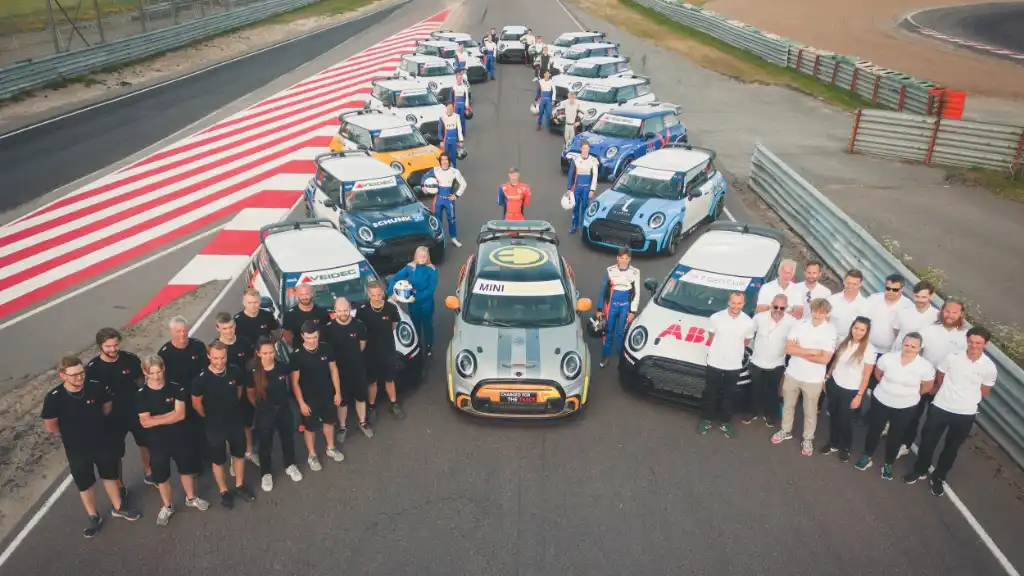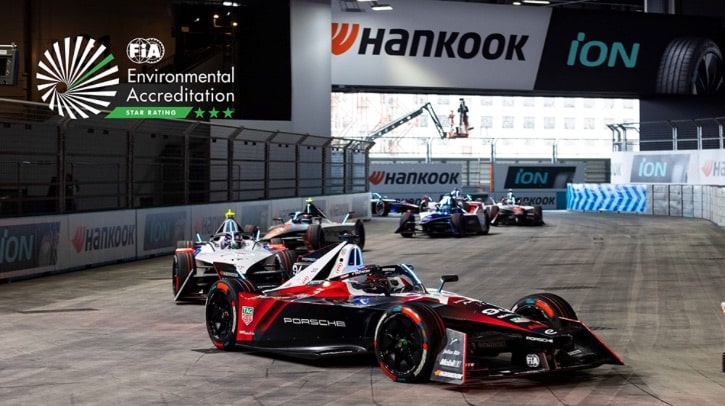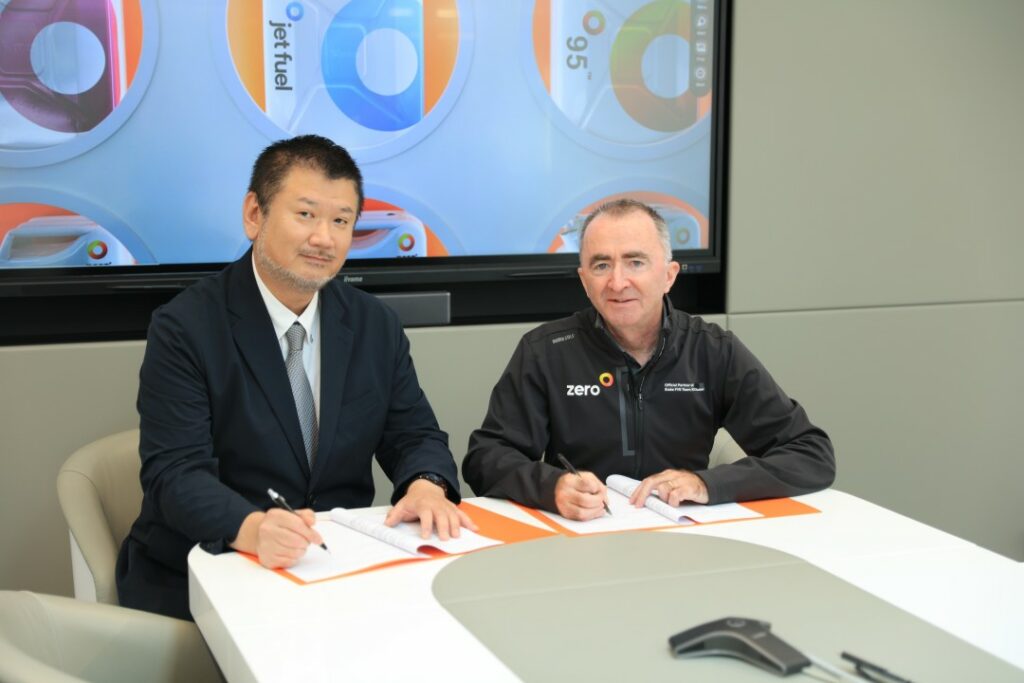Motorsport is aiming to become Net Zero and this week in the Sustainable Motorsport Roundup you will learn about some initiatives that it hopes will get it there. I also have a look at a very cool project between P1 Fuels and Tilke, recycled E-Fluids and an open test day for junior drivers interested in the NXT Gen Cup.
Sustainable Motorsport News

Renault is ending its Formula 1 engine operations ahead of the new rules era in 2026. In a statement it was revealed that the company’s F1 engine factory at Viry-Chatillon near Paris would be transformed into an engineering centre to help contribute to cutting-edge technology of future Renault and Alpine cars.
“The alternative projects that have been marked out for Viry include the development of a future Alpine Supercar, work on future battery technology and R&D on electric motor technologies. Viry would also continue to contribute to Renault’s other motorsport activities, including Alpine’s World Endurance Championship program, as well as customer projects, plus Formula E and Rally-Raid efforts for partner brands.”
At the renowned Goodwood Revival, P1 Fuels and Tilke announced a pioneering initiative to install modular, containerized units at racetracks, enabling the on-site production of 100% fossil-free e-fuel. This innovative solution uses waste CO₂ to produce high-quality fossil-free gasoline, allowing for the seamless use of sustainable fuel in existing combustion engines without any modifications.
These containerized units are fully modular and scalable, which means they can be customized to match the specific fuel needs of each racetrack. The decentralized nature of this technology not only makes it easy to implement but also provides cost savings and significant emissions reductions. This approach is ideal for motorsport venues seeking to improve sustainability without the need for a complete overhaul of their existing infrastructure.
You can read more about the initiative here.
Biofuels International has more details on the initiative of the Mercedes F1 team to quadruple their aviation emission cuts by the end of 2025.
Alice Ashpitel, head of sustainability, Mercedes-AMG PETRONAS F1 team, said: “Our investment in Sustainable Aviation Fuel is more than a strategy; we believe it can create a greener future. We see SAFc as a game-changer, a way for sports and businesses to make a lasting impact. We hope that our support for this sector can help trigger others to do the same and drive further investment in SAF production. We have been hugely grateful for the support of our suppliers SkyNRG and British Airways who have helped us realise our ambition to mitigate one of the most significant sources of our emissions and look forward to engaging the wider industry sector in the future.”
PMW reports that Hankook has earned three stars in the Environmental Accreditation Programme from the Fédération Internationale de l’Automobile (FIA), its highest level of environmental and sustainability certification.
Hankook Tire was identified for its active involvement in sustainability, including climate change initiatives, as the exclusive tire supplier and sponsor of the FIA Formula E World Championship.
PMW also reports that the FIA has awarded transmission specialist Xtrac with two-stars in its Environmental Accreditation Programme. Based on an evaluation, the FIA sustainability auditors discussed potential areas for improvement with Xtrac. Once this work was finished, using the FIA’s comprehensive self-assessment tool, Xtrac applied for an audit. It received confirmation of its two-star accreditation, a certificate and an audit report with additional recommendations. The certification is valid for two years.
Motorsport UK attended the 2024 Labour Party Conference on 22 September and hosted a fringe event, welcoming MPs, Party members and the industry. Hugh Chambers, Motorsport UK CEO, outlined how motorsport can accelerate the future of transport to attendees before being joined by Guy Lachlan from Motor Spirit and the Historic and Classic Vehicles Alliance.
“Achieving Net Zero is one of humankind’s key challenges, and it is welcome to see the new Labour Government’s focus on accelerating that goal through its mission-led approach. We, in the motorsport industry, are aware of our responsibility too in evolving the sport towards a zero-carbon future, and working with the new Government to come up with practical solutions to make that goal a reality.“
Sustainable Motorsport Tech

The video above delves into how groundbreaking advancements in recycled E-Fluids are transforming the landscape and promoting sustainability within Formula E. “Chatting with Shell and Mahindra Racing team members, we find out more about the technology behind recycled e-fluids, their impact on performance, and Shell and Mahindra Racing’s commitment to a greener future.”
Shell’s E-Fluid, designed specifically for Mahindra Racing’s GEN 3 powertrain, can be recycled without compromising performance, reducing its carbon by 27% in comparison to the same fluid being disposed of after a race. This process not only reduces waste but also minimises the need for new oil production.
In his article “The efficiency asymptote,” Formula E driver Lucas Di Grassi explains the importance of efficiency in a Formula E powertrain.
“In the inaugural seasons of Formula E, when teams operated with standardized powertrains capable of generating 150kW in race mode, a five-speed gearbox was employed to compensate for the motor’s inability to reach peak power quickly. Over time, however, my team, Abt Sportsline, progressively reduced the number of gears—opting for three gears in Season Two, two gears in Season Three, and finally, a single gear by Season Four. This evolution was part of a broader trend during the Gen1 era, where the shift toward single-gear systems became essential due to the inefficiencies associated with gear changes, which not only cost valuable time but also diminished overall system efficiency. Modern powertrains now utilize a single gear, designed with wide and shallow teeth to minimize friction. This configuration allows for near-seamless acceleration from 0 to 300kph, a critical performance advantage in Formula E racing.”

CNN explains how motorsport is trying to reach Net Zero. Could fuels like that made by Zero Petroleum, made from air and water, help accelerate the journey?
“Synthetic fuels aim to be carbon neutral, and those used in racing are made by combining carbon and hydrogen — to make hydrocarbons — just like gasoline used in cars today. The difference is, instead of using oil, which pollutes and heats the planet, the carbon in synthetic fuels is sucked from the air with filters, while the hydrogen comes from water using the process of electrolysis, powered with renewable energy sources like wind and solar.”
The build-up to the 2024 Professional Motorsport World Expo powered by McLaren Applied is reaching its final stages, with over 200 exhibitors and a raft of speakers confirmed for the event. There are a number of highlights to look forward to for the 2024 edition, including a new Advanced Powertrain Technology Forum – taking place on the PMW Magazine stage and a High-Performance Automotive Symposium.
Daily Sportscar explains what you can expect from the forum.

ERA’s mission is to use technology to lower the barriers of entry and promote accessibility to formula track racing. With a unique blend of ingenious high-tech concepts and a deeply ingrained ethos of creativity and sustainability, it’s built a cost-efficient racing platform to boost junior e-racer careers and provide entry level training on electric propulsion racing.
“Recognizing the need for a higher efficiency drive system, ERA approached CISSOID to see if its silicon-carbide (SiC) power modules and inverters could offer a solution. Both companies came away from the resulting cooperation enriched in experience and with better solutions for their respective customers. The main objective for ERA was to improve the efficiency and power – needing to reach the power limit for Formula 4 with more ease and margin, along with delivery of sustained power bursts. In the same move, it could reduce cooling requirements and increase power system reliability.”
Read more here.
There are a number of great sustainable motorsport-related articles in the October edition of Race Tech magazine including:
- WHY WE NEED FORMULA E: A decade on from that historic first race round the Bird’s Nest stadium, Andrew Charman asks Frédéric Bertrand – who spent 10 years as the FIA creating and developing Formula E, and now runs one of the teams–why the electric series works
- BUILDING NASCAR’S EV: Of all the taboos for NASCAR to break, an EV racecar ranks as one of the biggest. So what’s going on? Chris Pickering talks to the lead engineer behind the project
- GREEN TECH: Hydrogen fuel cells Chris Pickering talks to the motorsport director of Symbio, the leading hydrogen mobility pioneer whose technology underpins the ambitious Extreme H and MissionH24 hydrogen projects
- POWER TECH: Mahindra Formula E Significant technical changes in the all-electric Formula E World Championship could provide a route back to the front of the grid for one of its longest-serving manufacturers. By Andrew Charman
You can order your copy here.
Series News

NXT Gen Cup, the world’s first 100% electric junior touring car cup, offers an open test day for junior drivers at Gelleråsen Arena in Sweden on October 6th.
“This is a great opportunity for young drivers to get a first test of electric racing with support from our team of engineers and mechanics at the iconic Gelleråsen Arena circuit,” said Fredrik Lestrup, NXT Gen Cup founder.
A limited number of places is available for the test day which features six sessions from 08:00 to 17:00 during the day at a cost of 4.000 SEK + tax. More details can be found here.
The FIA World Rallycross Championship will break all-new ground in 2025 with the announcement of the series’ inaugural ice event set for Canada in January.
The 2025 ‘Battle of Technologies’, which pits electric against renewable fuel-powered combustion vehicles, goes back to Trois-Rivières for the first time since 2019 to take on a Volvo CE-prepared ice track within at the Grand Prix de Trois-Rivières (GP3R) circuit.
“We are incredibly excited to be returning to Canada for the first time since 2019 for an event that will look like nothing we have ever seen on the calendar before,” enthused Rallycross Promoter Managing Director Arne Dirks. “We are of course familiar with Trois-Rivières, but seeing it on snow is going to add an all-new incredibly spectacular element to our calendar. We cannot think of a better way to kick off the 2025 season.”
Meanwhile, AutoWeek has a look at rallycross in their article Battle of Technologies: EV and ICE Power Coexist in FIA World Rallycross.

Autosport looks at Formula 1’s investment in sustainable aviation fuel as they begin rationalizing their calendar as part of their net zero push.
“Rationalising the calendar is a key commitment that we have made, and one that we have been set to do. When you look at this year, many people who are surprised to see the Japan race in April, equally, you have Azerbaijan in September all the way through to Qatar, moving towards the end of the season. The reason for that is to rationalise the calendar, to decrease the distance from point A to point B, which equates to lower carbon emissions. We know that there is more to do, and those conversations are absolutely ongoing and it’s an important part of what we deliver, because you can’t see carbon, but you can understand what is an associated metric.”
The Formula 1 website has an excellent guide explaining what sustainable aviation fuel is in addition to other sustainable logistics initiatives the series is implementing. You can read the guide here.
Formula E Notebook (FEN) has discovered some details of the look that the Gen4 car will feature from the 2026/27 season onwards. The design will include a longer than usual nose and will be an open wheel design, despite rumours that the car might return to the closed-wheel look of its Gen2 predecessor.
FEN also reveald that the first specification of Gen4 Bridgestone tire has already been circuit tested on a ‘mule’ single-seater car in Europe recently. The test is believed to have been completed in Spain last month but no further details are known on mileage, the driver conducting the test or the specific car that the rubber was tested on. The Japanese company will return to top-line international single-seater racing since it left F1 in 2011. Engineers from Bridgestone were in the Formula E paddock throughout last season gaining knowledge of Formula E circuits and entrants.
Read the complete article here.
In other Formula E news, The Race reports that the ERT Formula E team has provided a major pre-season surprise by arranging a deal to run older-spec Porsche powertrains, a dramatic move that could help shore up the team’s future.
Those negotiations appear to have borne fruit for what is likely to be a two-season deal until the Gen4 era kicks in – although it is believed that several factors have to be ironed out to absolutely secure the supply for the start of the season, which is now just 70 days away. You can read the complete story here.
You can find out more about the Bridgestone FIA Eco Rally Cup here.
Getting to the Track Sustainably
- Zero has signed a Memorandum of Understanding (MOU) with Toshiba Energy Systems & Solutions Corporation (“Toshiba”) (Zero)
- Caterham Welcome Yamaha Motor in Next Phase of Its EV Sports Coupé Development (Caterham)
- Bridgestone’s latest tires have 55% recycled and renewable materials (Green Car Reports)
- Zero emission truck sales gain momentum in EU, according to latest ICCT figures (Freight Carbon Zero)
- Eurostar set to join SkyTeam as first non-airline partner (Business Traveler)

- EasyJet Teams Up with JetZero to Develop Hydrogen-Powered Blended-Wing Aircraft (HYSKY)
- British Airways announces major investment in carbon removal credits through partner CUR8 (Green Air News)
- Asia-Pacific nations pledge closer collaboration on sustainable aviation at ICAO New Delhi summit (Green Air News)
- Infinium and Twelve raise a total of up to $1.7 billion towards eSAF production (Green Air News)
- NASA Unveils Hydrogen-Hybrid Wing Airliner Concept to Revolutionize Sustainable Aviation (HYSKY)
- Boeing’s Aurora Flight Sciences Completes 7-Hour Hydrogen-Powered UAS Flight (HYSKY)
- Clean Aviation Unveils Updated Strategic Research & Innovation Agenda (SRIA) Focused on Hydrogen and Sustainable Aviation Fuels (HYSKY)
- Cambridge Report Outlines Four Key Goals, Including Hydrogen-Powered Aircraft, to Achieve Net Zero by 2050




